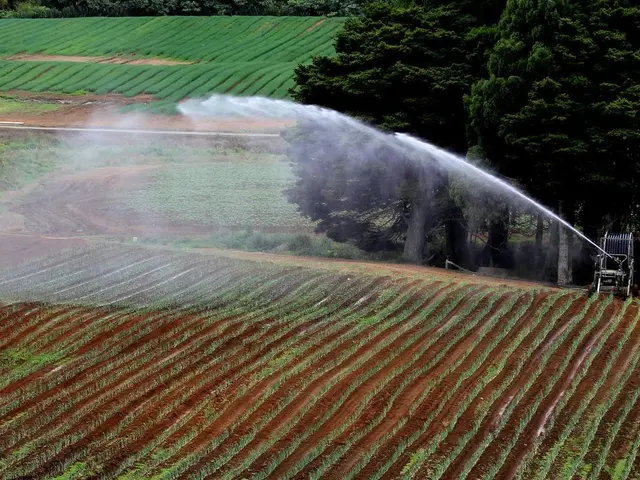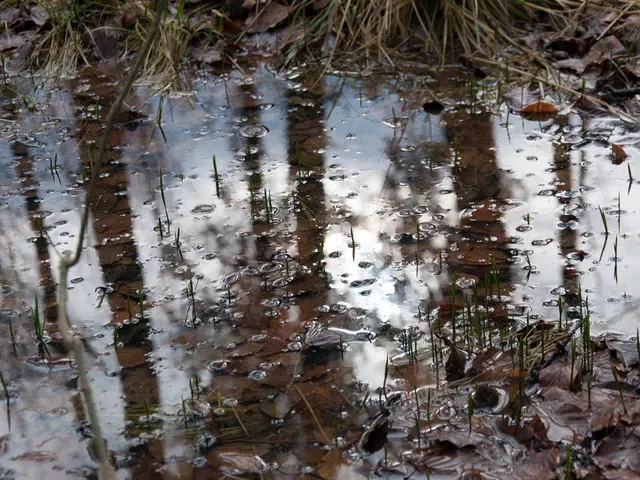Katyusha covered in cottonwood fluff. Protect yourself from the cottonwood bombardment.
Yekaterinburg's Cottonwood Fluff Nuisance
June in Yekaterinburg sees a blanket of cottonwood fluff, the pesky white puffballs that carry airborne allergens. The allergen level in the air exceeds the norm by a factor of three, according to the Sverdlovsk Region's Center for Hygiene and Epidemiology. Those who suffer from allergies complain of coughing, itchy throats, and difficulty in breathing. But, allergy sufferers aren't the only ones affected; even healthy individuals find the fluff irritating to the eyes, causing sore throats, reducing breathability, and settling on the skin.
The situation worsens indoors, as the fluff penetrates through windows, elevator lobbies, and clogs ventilation systems, interfering with household appliances. Drivers bemoan overheating engines and clogged filters due to the fluff.
Protecting Yourself and Your Home
- The first line of defense - protecting your windows with mosquito nets. They trap the fluff without impeding ventilation. If you don't have mosquito nets, use marl, foil, or felt as a temporary solution.
- Perform a wet cleanup at least twice a day. Pay special attention to curtains, sofas, and carpets. Humidifiers collect the fluff on the floor, making cleanup more manageable.
- Use vacuum cleaners only with HEPA filters, which can capture the tiniest particles. Clean condensers and confirm the functionality of exhausts.
- If you have a propensity towards allergies, rinse your nose with water, wear masks, especially during cleaning. Avoid products that exacerbate reactions, such as chocolate, citrus fruits, and smoked foods.
Cottonwood Fluff and the Risk of Fire
Do not attempt to ignite the fluff. It ignites instantly, spreading flames quickly and releasing toxic substances.
Every year, emergency services report more than 60% of fires traced back to cottonwood fluff arsonists. Some of the most severe blazes occurred in 2021. For example, on June 12, the park of Mayakovsky caught fire after two adults showed children how to ignite the fluff.
Avoid using vacuum cleaners to collect the fluff when it's airborne - it will only scatter throughout the room. Instead, wait for it to settle, and remove it using a damp cloth. In the backyard, use a broom doused in water to combat the fluff.
The Role of Cottonwood Trees and Countermeasures
In the late 20th century, cottonwood trees accounted for between 60-80% of all green plantings in the city, according to Angelica Teptina, a lecturer at the Department of Biodiversity and Biological Ecology at the Institute of Natural Sciences and Mathematics at Ural Federal University.
"In the 50s-70s, there was active urban greening in Yekaterinburg. One popular tree was the balzam ball tree. This species was planted in large quantities due to its numerous positive qualities: rapid growth compared to other species, rapid growth of the green mass, hardiness, tolerance to air and soil pollution, and attractive visual features. However, once most of the trees reached reproductive age and plantings took up vast areas, the problem of cottonwood fluff became apparent," Teptina explained.
Current efforts to reduce the number of these trees have been ongoing for nearly a decade,
"The issue of fluff is not new, and it has been attempted to resolve for years. In recent years, around 20-30 cottonwood trees are no longer planted, and they are replaced with other deciduous species," said Angelica Teptina.
As of now, there are approximately 130-150 thousand cottonwood trees in Yekaterinburg. These trees make up around 23% of all green plantings in the city, according to city officials.
Controlling the Impact of Cottonwood Fluff
Minimizing Health Risks
- Indoor Air Purification: Use air purifiers indoors to minimize the amount of fluff entering homes and buildings.
- Face Masks: Wear face masks when outdoors during peak fluff seasons to prevent inhalation.
- HVAC Filters: Ensure that your heating, ventilation, and air conditioning (HVAC) systems are equipped with filters capable of capturing tiny particles such as cottonwood fluff.
Property Maintenance
- Regular Cleaning: Clean outdoor surfaces, furniture, and vehicles regularly to prevent the accumulation of fluff.
- Gutter Maintenance: Clean gutters and downspouts frequently to prevent clogging by the fluff.
- Landscape Adjustments: Consider planting alternative trees or shrubs that do not produce the fluff in garden areas.
Community and Environmental Efforts
- Urban Tree Management: Encourage local authorities to manage cottonwood trees through pruning or replacing them with less fluff-producing species.
- Public Awareness: Raise awareness about the issue through public campaigns, encouraging residents to take preventive measures.
- Community Clean-Up Events: Organize community clean-up events to collectively manage the accumulation of fluff in public spaces.
By implementing these measures, you can lessen the impact of cottonwood fluff on both health and property in Yekaterinburg.
- To minimize the impact of cottonwood fluff on indoor air quality, consider using air purifiers that can effectively capture the minute particles.
- Whenever you step out during the peak fluff season, make sure to wear a face mask to reduce the risk of inhalation.
- For HVAC systems, ensure they are properly equipped with filters capable of trapping tiny particles like cottonwood fluff.
- Regularly clean outdoor surfaces, furniture, and vehicles to prevent the buildup of fluff and maintain a clean environment.
- Take part in community clean-up events to manage the accumulation of fluff in public spaces, fostering a healthier and more beautiful city.
By adopting these practices, we can work together to combat cottonwood fluff and promote health, wellness, and overall environmental consciousness in Yekaterinburg, while also considering our mental health and skin care by being more mindful of our exposure to allergens and potential triggers. Furthermore, let's not forget the importance of proper nutrition in supporting our overall health and wellbeing, as well as the role of environmental science in addressing climate change and sustaining the health of our planet. It's crucial to prioritize fitness and exercise too, as they contribute positively to both our physical health and mental wellbeing.








